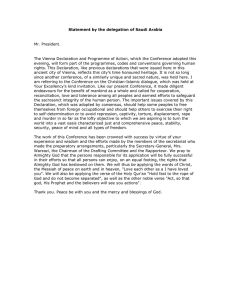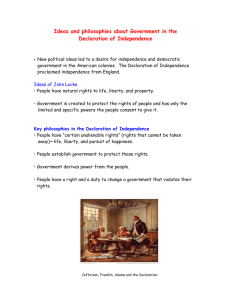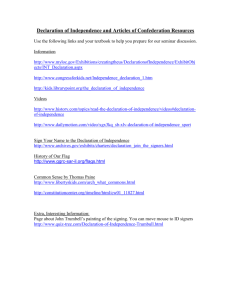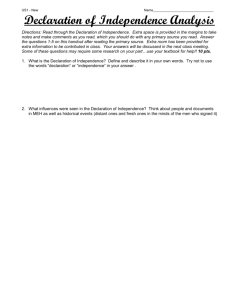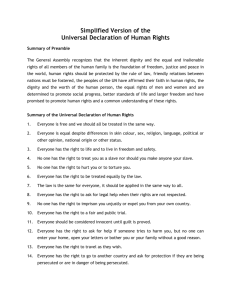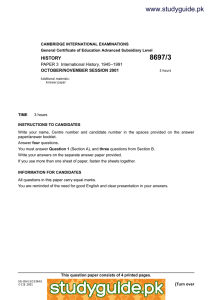Brief historic overview of the Commission on Human Rights
advertisement
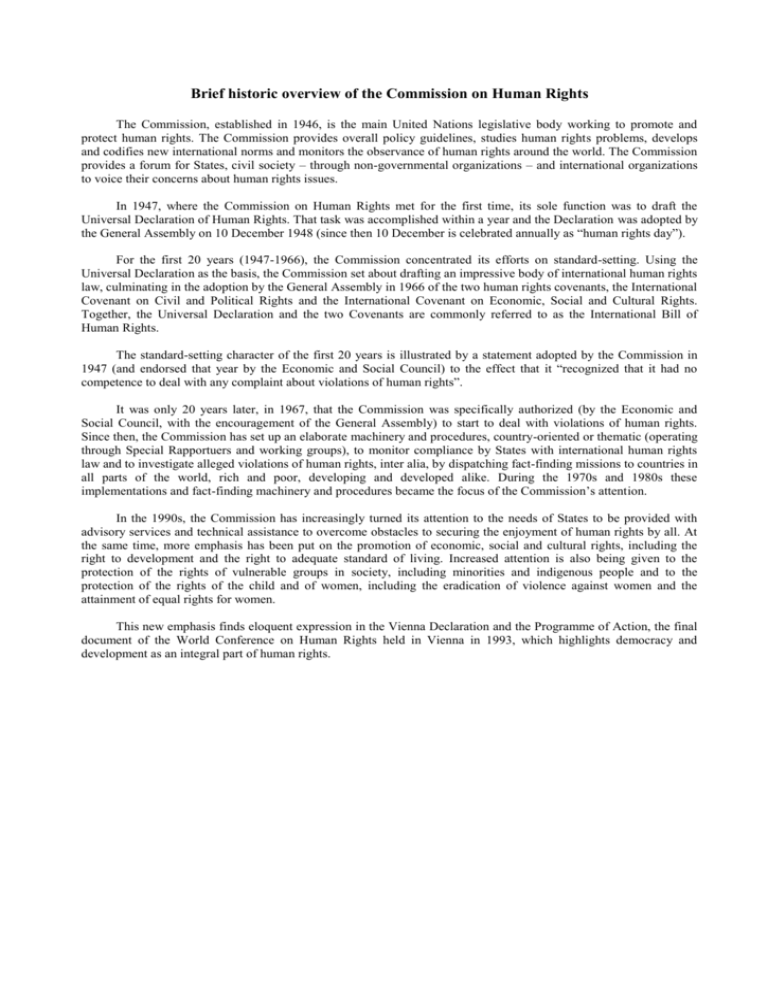
Brief historic overview of the Commission on Human Rights The Commission, established in 1946, is the main United Nations legislative body working to promote and protect human rights. The Commission provides overall policy guidelines, studies human rights problems, develops and codifies new international norms and monitors the observance of human rights around the world. The Commission provides a forum for States, civil society – through non-governmental organizations – and international organizations to voice their concerns about human rights issues. In 1947, where the Commission on Human Rights met for the first time, its sole function was to draft the Universal Declaration of Human Rights. That task was accomplished within a year and the Declaration was adopted by the General Assembly on 10 December 1948 (since then 10 December is celebrated annually as “human rights day”). For the first 20 years (1947-1966), the Commission concentrated its efforts on standard-setting. Using the Universal Declaration as the basis, the Commission set about drafting an impressive body of international human rights law, culminating in the adoption by the General Assembly in 1966 of the two human rights covenants, the International Covenant on Civil and Political Rights and the International Covenant on Economic, Social and Cultural Rights. Together, the Universal Declaration and the two Covenants are commonly referred to as the International Bill of Human Rights. The standard-setting character of the first 20 years is illustrated by a statement adopted by the Commission in 1947 (and endorsed that year by the Economic and Social Council) to the effect that it “recognized that it had no competence to deal with any complaint about violations of human rights”. It was only 20 years later, in 1967, that the Commission was specifically authorized (by the Economic and Social Council, with the encouragement of the General Assembly) to start to deal with violations of human rights. Since then, the Commission has set up an elaborate machinery and procedures, country-oriented or thematic (operating through Special Rapportuers and working groups), to monitor compliance by States with international human rights law and to investigate alleged violations of human rights, inter alia, by dispatching fact-finding missions to countries in all parts of the world, rich and poor, developing and developed alike. During the 1970s and 1980s these implementations and fact-finding machinery and procedures became the focus of the Commission’s attention. In the 1990s, the Commission has increasingly turned its attention to the needs of States to be provided with advisory services and technical assistance to overcome obstacles to securing the enjoyment of human rights by all. At the same time, more emphasis has been put on the promotion of economic, social and cultural rights, including the right to development and the right to adequate standard of living. Increased attention is also being given to the protection of the rights of vulnerable groups in society, including minorities and indigenous people and to the protection of the rights of the child and of women, including the eradication of violence against women and the attainment of equal rights for women. This new emphasis finds eloquent expression in the Vienna Declaration and the Programme of Action, the final document of the World Conference on Human Rights held in Vienna in 1993, which highlights democracy and development as an integral part of human rights.
